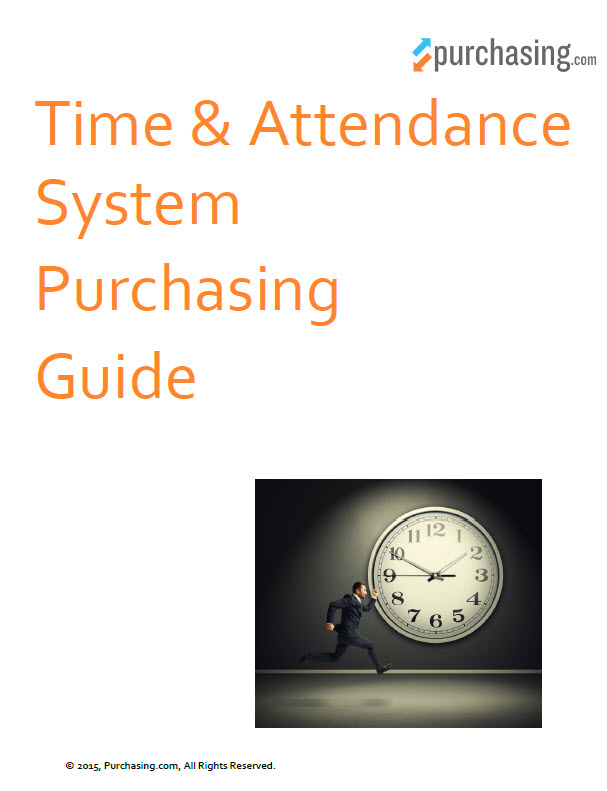Introduction to the Time & Attendance System Buying Process
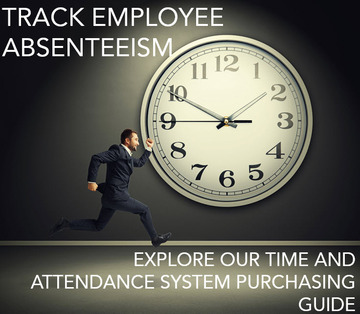 Table of Contents
Table of Contents
- Introduction
- Trends
- Types
- Devices
- Features
- Choosing a Dealer
Introduction
Time and attendance systems have evolved in recent years, now dramatically simplifying accounting procedures while ensuring total compliance with all labor requirements. Widely used by businesses of every size, they automate the tracking of an employee's time through three components:
- Log-in method, including an ID badge with a magnetic swipe card or a personal identification number (PIN), biometric input (fingerprints and handprints being the two most common methods), or web-based input that often takes a photo of the employee logging in or out.
- Data capturing equipment, including wall-mounted time clock, kiosk, mobile phone, computer, or telephone.
- Software platform that compiles the data and provides real-time reporting.
These three components work together to record entry and exit data that gets transferred electronically from the log-in device to the software program. Data transfer can be scheduled for any increment of time and greatly assists with payroll and compliance reporting as well as accruals and carry-forward policies.
Cost-saving benefits
In addition to automation, one of the primary benefits of a time and attendance system is accuracy. According to a recent study conducted by Nucleus Research, 19% of employees "buddy-punch" - the act of clocking in or out for another individual. A similar study conducted by the American Payroll Association found that buddy-punching accounted for 2.2% of gross payroll or about 4.5 hours per employee each week in some cases.
At the very least, a time and attendance platform reduces the frequency of buddy-punching and time-theft when using ID badges, and all but eliminates them with a biometric system. The system reduces labor costs by ensuring the accuracy of wages and benefits paid, further streamlining your business through labor-related insight that allows you to fine-tune your workforce.
But not every benefit is related to inaccurate time reporting. Another advantage of a time and attendance system is that it reduces the burden on your accounting department. This often represents a significant savings for small businesses that routinely have only one or two people responsible for the books. When payroll is run under a traditional system, the collection of time cards and manually reentering the data can take 5 to 10 hours or more, especially when time cards are illegible or incomplete.
With a time and attendance system, this process is condensed into a matter of minutes. The data has already been entered, requiring little more than a few clicks and a single individual to complete the process. Depending on the size of your payroll staff, this can provide a substantial savings in labor - time that can be reallocated to other employees and initiatives.
Purchase considerations
This purchasing guide covers everything you'll need to make an informed purchase decision on a time and attendance system for your company. From common types and popular features to the questions you can use to effectively compare dealers, we'll show you how to pair the right system with your needs and let you know what you can expect to pay for it.
As you read through, keep the following considerations in mind. They'll simplify your conversation with a dealer and ensure you don't over- or under-buy.
- Number of employees: How many do you need to track? Many systems, especially those that are web-based, assess their fee based on the number of employees.
- Locations: How many different sites will use the system? If your organization is comprised of a number of different facilities, this may add to installation and integration procedures (and cost).
- Integration and maintenance: Do you have in-house IT staff or will you need complete support from the vendor? Though integration is largely a concern for PC-based systems only, there may be browser, mobile, or other configuration issues with a web-based system as well. The same concerns apply to software and equipment upgrades (but usually just for PC-based systems).
- Expandability: Do you forecast growth for your company in the coming 2 to 3 years? The system you select will have to keep pace with your expansion. Don't forget to factor in seasonal staff and temporary employees hired for specific initiatives.
Trends
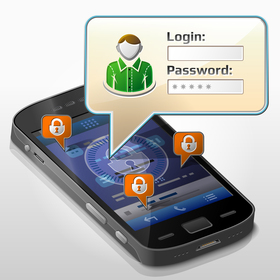 When comparing time and attendance systems, it's important to have a current view of the technological developments impacting the industry. Among the most significant trends are:
When comparing time and attendance systems, it's important to have a current view of the technological developments impacting the industry. Among the most significant trends are:
- Mobile applications, allowing both employees and managers to record and track time activity from any mobile device.
- Cloud-based systems, providing cost-effective buy-in, a high degree of usability, and easy maintenance
Here's what you can expect to find with both.
Mobile time and attendance applications
The ability to track employee hours via mobile technology is quickly becoming a necessity as more and more employees work remotely. These platforms operate though a single app, typically compatible with both iPhone and Android devices.
The benefit of this system to employees is two-fold. One, it allows your employees to record and monitor their time through a device they are already familiar with. This all but eliminates any additional training. Second, it maximizes time by allowing employees to access their labor-related data in real-time, monitoring hours and accruals and making adjustments or leaving notes for management when necessary.
Most platforms are designed to be extremely user-friendly. There are limited menus and navigation (if any). In fact, most apps allow clocking in or out with the simple tap of a button or specific job code, with status icons that alert employees when they are logged in or out.
This same level of simplicity is extended to managers, with mobile time and attendance systems allowing them to track employees on the go. Popular systems enable a supervisor to effectively track crew time, logging in a single individual or an entire group at the start of a job. This functionality is ideal for the construction industry and similar field-based operations.
One of the primary strengths of many mobile platforms is that they include GPS tracking - an especially useful feature for employees who work remotely. GPS offers real-time location of all employees, providing accountability while enabling managers to allocate staff more effectively.
Many mobile time and attendance systems also provide full editing capabilities, allowing managers (and employees) to switch between different job codes or add, edit, and update notes when necessary.
Cloud-based time and attendance technology
This is by far the most dominant trend in the time and attendance industry today. Its popularity is largely due to the cost-effectiveness of the web-based platform. A cloud-based time and attendance system offers low up-front costs, virtually no ongoing maintenance fees, and a secure setup that can be accessed from any location in the world - often without even requiring any new hardware.
Sometimes referred to as Software as a Service, or SaaS for short, a cloud-based time and attendance system allows employees to log in and out over the web. It's a centralized platform that enables payroll employees and managers to monitor time and compliance, schedule staff, and run reports in the very same way.
The real benefit of this type of system is that is requires no in-house IT support. There is no software to install. All updates to the platform are conducted in the background on the provider side. The only requirements for using a cloud-based system are a web-enabled device, web access, and a supported browser.
We'll take a look at specific costs in the section on Choosing a Dealer. But for now, know that a cloud-based system is usually offered in pre-defined packages billed monthly. These packages are grouped by the number of employees they track, for example from 1 to 50, 50 to 100, 100 to 200, etc. This system provides further cost savings - especially beneficial to small businesses - through price points that are directly proportional to use, allowing you to purchase only the level of time and attendance tracking you need.
The one concern some business owners have is security, and with the sensitive employee data that gets uploaded to the service, rightfully so. While no service can guarantee 100% security, be on the lookout for those that provide the highest standards in relation to their data centers. Common features among top companies include:
- Multiple Internet connections
- Uptime of 99% (or higher)
- Server encryption
- Frequent data backup (daily is ideal)
- Alternate power source
Types
Time and attendance systems are divided into two main categories, PC-based and web-based. From there, they are further segmented by the log-in method and data capturing equipment they use. Deciding between an in-house or Software as a Service (SaaS) solution is often the first step many businesses take. It's a decision that is dictated by the size of the organization, but not always.
Here's how the two types compare, followed by their sub-categories and which industries typically use each the most.
PC-based time and attendance
An in-house or PC-based time and attendance system is installed on a single machine for small-scale installations and local servers for larger operations. All time data is saved on-site and must be regularly backed up to prevent loss.
In general, you can expect to find that most PC platforms will offer much of the same functionality as a web-based model. PC-based time and attendance systems calculate work hours and export to popular payroll software platforms such as ADP and QuickBooks. They should also provide tracking features for job costing and codes as well as extensive and customizable settings for:

- Overtime
- Pay periods
- Shifts
- Work groups
- Salaried and non-salaried employees
- User permission levels (security)
- Reporting
Depending on the size of the solution you purchase, some PC versions may come with dealer installation and setup while others will be do-it-yourself. Watch out for the latter unless you're reasonably comfortable with software installation (and integration) and the time and attendance system is backed by some kind of phone or web support to troubleshoot any issues that may arise. That brings us to the primary difference between the two types of systems.
The biggest difference between a PC-based setup and one offered through the web is that the in-house version requires varying levels of IT support depending on the complexity of the platform. In addition to installation, frequent upgrades to the system's software and the integration of new equipment, such as a mobile device, may require specialized expertise to run smoothly.
While some small businesses opt for this type of time and attendance system, they are largely relegated to mid-size to large organizations with a number of different locations and employees that range from the hundreds to the thousands. Examples would include local and national government operations as well as regional, national or international corporations such as supermarket chains, franchised restaurants, and retailers.
Web-based time and attendance
Web-based systems are at the forefront of the time and attendance industry for the broad usability and low upfront cost they provide. A web-based or SaaS setup typically requires no in-house IT support as the platform is hosted entirely over the Internet. All upgrades to the service are conducted on the provider's end and simply appear the next time you log in to the system.
In addition to the cost-effectiveness of the buy-in, a web-based time and attendance system can usually save on the additional cost of equipment. The platform is accessed through any web-enabled device, including laptop computers, mobile devices, and tablets. Using a standard web browser, employees and managers are able to use every function of the system from any location in the world.
Common features include:
- GPS tracking to verify employee location
- Webcam "biometrics" that take a photo of the individual clocking in or out
- Performance management that monitors activity on employee devices
- Editing of all timesheets, including work codes and the addition of any notes
- Extensive reporting, including who is clocked in, their location, and their current task, as well as tardiness and absences
- Scheduling
The low-cost nature and simple integration of a web-based time and attendance system makes it ideal for small to mid-size businesses with 200 employees or less. Up and running in minutes, it's also perfect for satellite locations and temporary booths. Accessible on just about any smartphone or similar mobile device, it can provide the same levels of time tracking and reporting as a large PC-based system.
Back to top
Data Collection Devices
As mentioned above, the market is also segmented by the method of log-in and data collection devices used. It's worth noting that many of these devices apply only to PC-based systems and require hard-wiring for integration with the companion software platform.
Popular devices include:
Punch clock
This is often what people think of when they think of a time clock. Punch clocks accept standard time cards and punch the time through a push bar often located at the top of the unit that engages the type wheel. Heavy-duty and dependable, many are built rust-resistant enabling them to be used outdoors and in extreme environments.
They can be hardwired into an electrical grid or powered by battery in areas without reliable power. Type wheels can also be customized to include left-hand printing or a symbol wheel and, in some cases, are backed by a lifetime warranty.
Swipe card
Often used with magnetized employee badges, a swipe card time and attendance system works similar to a credit card reader. A magnetic strip containing the employee's ID is used to log in and out every time the card is swiped. With little security, this type of system is highly susceptible to buddy-punching, making it best suited to small operations where trust issues are not a concern.
Popular kits come with mounting bracket and all hardware required for installation as well as the connection cable, power supply, and software platform. Look for those that are compatible with your current operating system, including OS X, Windows 8, XP, Vista, or Windows 7. It's worth noting that some swipe card systems are only compatible with a single PC and cannot be installed on a server. Ask your dealer before purchase if you're unsure.
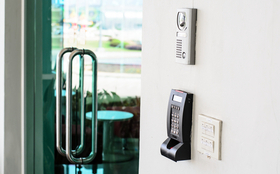 Biometric
Biometric
The term "biometrics" is used by web-hosted time and attendance providers to describe the process of taking a snapshot of the individual clocking in and out. And while this definitely provides more security than other systems, a true biometric time and attendance system uses a hand scan or fingerprint to identify each employee. With this functionality, these systems can also double as a security system, limiting access to certain rooms or buildings.
A biometric system is one of the most secure methods of time and attendance tracking, entirely eliminating the potential for buddy-punching and related forms of time theft. The system stores an employee's hand measurements then uses advanced algorithms to verify it for each successive punch. In addition to security, biometrics is also designed for operations that have minimal supervision of employees. Specifically, it ensures that time is recorded accurately, cutting down on unnecessary labor costs by reducing fraud.
- For information on additional access control devices, see our Access Control System Purchasing Guide.
Numeric keypad
Numeric input devices are often paired with another type of input device, most commonly either a swipe card or biometric reader. After identification is provided through an ID card or thumbprint, an extra layer of security is added by requiring a PIN for verification.
Depending on the model selected, you can expect to find numeric keypads capable of storing at least 20 days of data with a battery backup and connectivity that includes Wi-Fi and USB. Many have built-in signal bells and a wide range of customizations for interface, extended time tracking capabilities, scheduling, pay policies, and automatic time punches.
Proximity switch
Proximity switches are almost identical to a swipe card with one exception: the employee doesn't have to swipe anything. A proximity card is issued to each employee. To clock in, all they have to do is wave the card in front of the reader. Some devices also include a numeric keypad to add an extra level of accountability and security.
The real benefit to this type of system is that they require less maintenance and tend to last longer than a standard swipe card setup. With each swipe in a standard system, the reader slot collects dirt and grime that can eventually cause the reader to malfunction. By removing this function, a proximity switch is complexly enclosed and therefore requires no cleaning or ongoing maintenance.
Employee self-service
Employee self-service time and attendance systems can be accessed through the web or via a centrally-located kiosk. Profiles are secured through an individually-assigned PIN. Self-service systems give employees the widest range of flexibility in the way they report time, assigning hours worked to specific departments, locations, or job codes. They also typically allow the entry of business expenses such as tips, mileage, and meals.
Salaried employees are able to enter the hours dedicated to each project, making it well-suited to government agencies and other organizations that operate through oversight and billable hours. This type of setup is also designed to streamline and compile a large amount of system-wide data. For example, the Commonwealth of Massachusetts is currently using an employee self-service time and attendance system to integrate time data taken from executive departments and constitutional offices as well as the Massachusetts Community College and State University systems.
Back to top
Features
While most time and attendance systems include the same basic features, it's worth knowing what you should expect to get from each, especially when transitioning from a manual payroll process. Here's a brief synopsis of the most common features as well as a few advanced features found on top web-based platforms.
Scheduling integration
Scheduling integration provides two unique benefits. The first is that it greatly simplifies scheduling -particularly in relation to compliance and overtime. Allowing managers to ensure all meal breaks, rounding rules, and similar considerations are satisfied, it keeps the employer in compliance with any local, state, or national overtime laws. It further enables managers and business owners to easily (and automatically) calculate pay for overtime and regular hours worked.
Put simply, scheduling integration maximizes your workforce. It enables the quick scheduling of individuals or teams into multi-faceted shifts with schedules that can be instantly distributed across a range of different communication channels for immediate response.
Payroll integration
Similar to scheduling integration, payroll integration provides a centralized platform that offers a range of payroll data. One of the most beneficial aspects of this feature is that it typically assembles all aspects of time and attendance on a single screen, greatly simplifying the process. Payroll employees are able to review, edit, and oversee all timesheets while managing expenses and advanced functions like vacation, sick days, and other aspects related to time off.
Reporting
Reporting functionalities often represent the make-or-break feature when it comes to productivity and ROI. The reporting feature on any good time and attendance system offers data in real time, all of which can be exported to a variety of different file formats. Reports can also be configured to provide a range of different views, allowing you to review data across departments, wage types, and even compare physical locations.
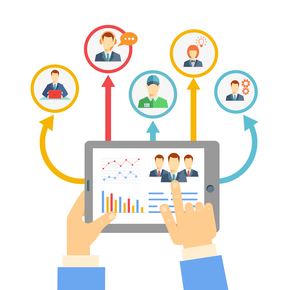 Most platforms include a number of built-in standards, with customizable options available. At minimum, the standard list should include reporting for:
Most platforms include a number of built-in standards, with customizable options available. At minimum, the standard list should include reporting for:
- Time cards
- Workforce management
- Scheduling
- Cost tracking
- Budgeting
Cloud capabilities
With the rapid development of online services, cloud capabilities of time and attendance software rival and even exceed that of a PC-based version. Systems with cloud capabilities enable users to enter, retrieve, and edit time data from anywhere in the world with an Internet connection. Simplifying validation and reconciliation, these setups come complete with a comprehensive scheduling tool and a wide range of time and attendance reports.
While the cloud once meant a limited range of fields, many services now offer up to 14 columns of clocking schedules, easily accommodating almost any size organization. For payroll processing, all data can be easily transferred to any of the top accounting platforms, including ADP, QuickBooks, Oracle, and Ceridian.
- Purchasing tip: Before you purchase a time and attendance system, make sure it's fully compatible with your accounting software and operating system (only applicable to PC solutions). For web-based models, ensure you have the minimum recommended version of your chosen browser installed.
Mobile capabilities
Used in conjunction with a larger PC- or web-based platform, mobile capabilities often take shape in an app that is easily installed on an employee's phone, tablet, or similar mobile device. With this app they are able to clock in or out, indicate break periods, edit job or cost codes, and send or edit messages to management.
Managers can view and approve employee hours, fix missed time entries, and review GPS snapshots that give an exact location for every employee. Mobile capabilities should be fully compatible with most iPhone and Android devices to ensure the simplicity of integration.
Sometimes provided free with the purchase of or subscription to a larger platform and sometimes provided as an upgraded level of service, mobile capabilities may affect cost. Fees vary from provider to provider but often range from:
- Free for up to 10 employees and 2 administrators
- $30 per month for 50 employees and 3 administrators
- $60 per month for 200 employees and 5 administrators
Key Performance Indicators (KPI)
Key performance indicators are another advanced feature, one that typically falls within the range of reporting. In short, this feature provides real-time business data that enables managers to effectively forecast and manage labor costs. Typical functions include the ability to refine schedules in relation to business demands, compile hours worked, job costing, and review your real-time productivity standing.
KPI is the time and attendance version of big data analytics, taking into account all local, national, and/or global operations. It provides a comprehensive view of every facet of your organization in relation to labor to ensure and improve upon operational efficiency.
Back to top
Choosing a Dealer
The best way to start the purchase process is by comparing multiple providers. Whether you're interested in a PC- or web-based solution, this will allow you to evaluate both the platforms themselves and the levels of support that accompany them.
As mentioned above, support will mean more to you if you're investing in an in-house time and attendance system. It's usually less of an issue for web-based customers due to the minimal amount of equipment, installation, and maintenance required.
With this in mind, here are a few general tips on choosing a quality dealer:
Check background and experience
Not every solution will work for every company. In fact, the industry tends to be somewhat segmented by the size of the business the solution is designed for. In general, a PC installation is better suited to a large national or multinational organization while web-based time and attendance platforms are highly cost-effective for small to mid-size businesses. At the same time, some providers specialize in field-based solutions while others are geared more toward an office setting.
There's an exception to every rule. So look for the provider that has clients similar to you, both in terms of size and line of business.
Read reviews, references, and ratings
Online reviews and ratings can be helpful. They provide a broad overview of the service and may also highlight strengths and weaknesses. Look for the same pros and cons repeated in online reviews - they can be very telling.
You can also ask a potential vendor for references. The ones they provide will almost always be their best customers, but they too can provide insight into the level of service.
Ask about customer care support
This is important regardless of the system you choose. While PC-based time and attendance systems require more ongoing support for software and equipment upgrades, web-based models aren't entirely hands-off. Online databases containing user manuals and warranty information are standard. Phone support may only be offered during business hours, but some vendors are also now providing online chat support that operates 24/7.
In general, expect to pay $100 to $800 per year for PC-based support, including all upgrades and service packs. If that sounds steep, per-incident charges can run from $55 to $125 per incident per hour. Web-based providers commonly offer phone support or live chat as part of the monthly package.
 Questions to ask
Questions to ask
Once you've narrowed the field using the above criteria, you can further evaluate dealers by comparing the specifics of their service. Whether speaking with them on the phone or gleaning the following information from their website, get answers to the following questions:
- Does the vendor offer industry configurations and customizations? This is important as it allows you to tailor the platform to your specific line of business.
- What types of product and software support are available? And what do they cost? Service costs are often dictated by the size of the system and the specific equipment you use. In addition to the service costs mentioned above, expect to pay an average of $150 to $200 per year to extend the service warranty on certain data capturing equipment.
- Is installation provided? If not, what does it cost and include? Remember, you need complete integration with any existing platforms meant to pair with or use data generated by the time and attendance system.
- Is training provided? With larger PC-based systems, many vendors provide some level of basic training on the system. With web-based models, training is usually in the form of online tutorials and/or user manuals.
Cost breakdown
The final aspect of comparison is cost. And while it should never be used as the primary means of selecting a product or service, the costs involved directly affect the ROI you'll be able to achieve through the system.
Get Quotes
- We contact sellers
- They compete for your business
Given the types and sub-categories we've covered in this guide, you'll notice that cost is typically motivated by four variables:
- The server, or program engine, priced according to scope and integration
- Advanced features such as field-based functionalities or platforms geared to a specific industry
- Number of people who use the system, including both employees and administrators
- Data collection devices, including software and hardware
With these factors in mind, you can expect to pay $350 to $1,000 for most standard data collection devices. It's worth noting that many fall in the $330 to $450 range for electronic models and $150 to $400 for mechanical punch clocks. Anything that incorporates biometrics will cost more, with popular models averaging $280 to $550 each and going as high as $3,500 and above.
Software licenses for PC-based versions cost between $150 and $350 for smaller applications that support 50 employees or less. Larger installations for 250 employees and more or integration with facilities in multiple locations can cost $800 to $3,200 per license.
In contrast, web-based time and attendance systems are billed through a recurring service fee. Some providers bill annually, offering a small discount (10% to 15% is common) for paying a year at a time. Otherwise service fees average $40/month for up to 20 employees, $100/month for up to 50 employees, and $150/month for 100 employees.
Ready to find a dealer? Start here.
